The first test-tunnel was built for AEG’s factory locomotives in the Berlin district of Wedding. To prove that a rail system under the Spree was possible, the tunnel from Stralau to Treptow was constructed between 1895 and 1899. The community of Stralau insisted that the tunnel also be built for use by the streetcar service. The engineers Carl Schwebel (1841–1900) and Wilhelm Lauter (1847–1917) applied the so-called “shield tunneling” technique – developed in England – for the first time in Germany to bore the four-meter wide tunnel duct.
In December 1899, the 454-meter-long tunnel was put into operation. The streetcars on the 82 line traveled from today’s Ostbahnhof through the tunnel to Treptow and, starting in 1909, on to Köpenick. One trip through the tunnel took around three minutes. Traffic under the River Spree had to proceed on one lane only, in one direction at a time. To avoid collision, the driver of the streetcar could only enter the tunnel once he had been handed the single baton – the train was thus referred to as the “Knüppelbahn” (baton train).
In 1932, streetcar service through the tunnel was shut down due to water damage. The Spree tunnel stayed open to pedestrians only. During the Second World War it served as an air-raid shelter both for the population of Stralau and for forced laborers in the peninsula’s factories. In 1948 the Spree tunnel was flooded and, 20 years later, the Stralau entrance to the tunnel was sealed. In December 1996, it was reopened for a short period. All that remains of the tunnel today are the name “Tunnelstraße” (Tunnel Street) and the administrative building of Stralau’s streetcar depot at Tunnelstraße 12, which opened in 1899. Flooded and sealed, the Spree tunnel is an invisible monument to Berlin’s transportation history.
-
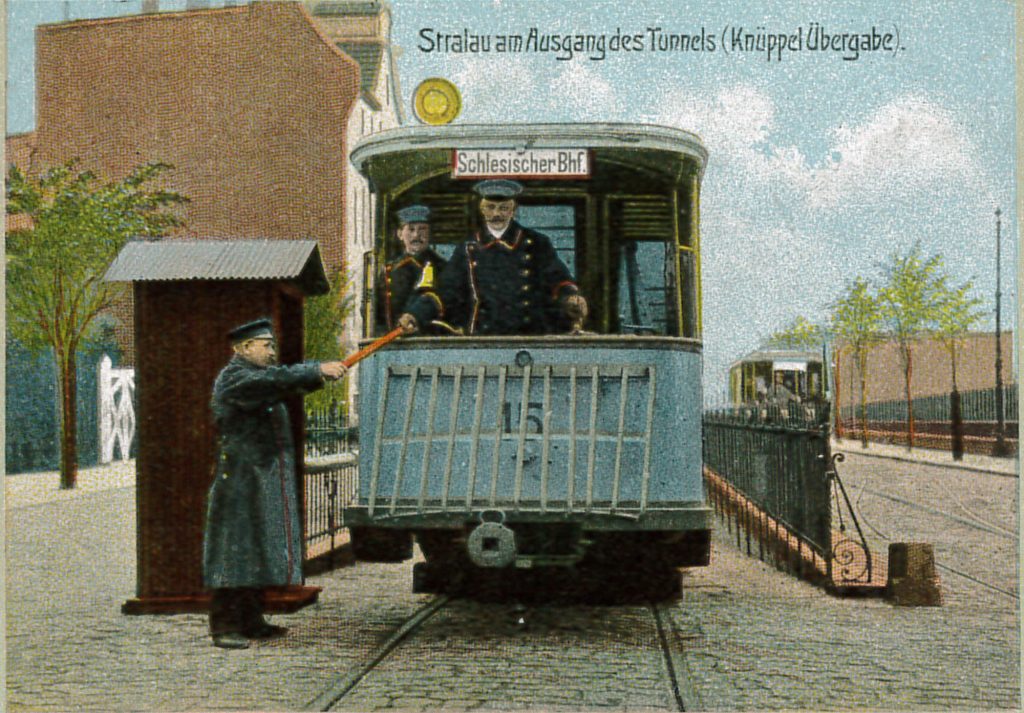
Die Tunnelbahn
-
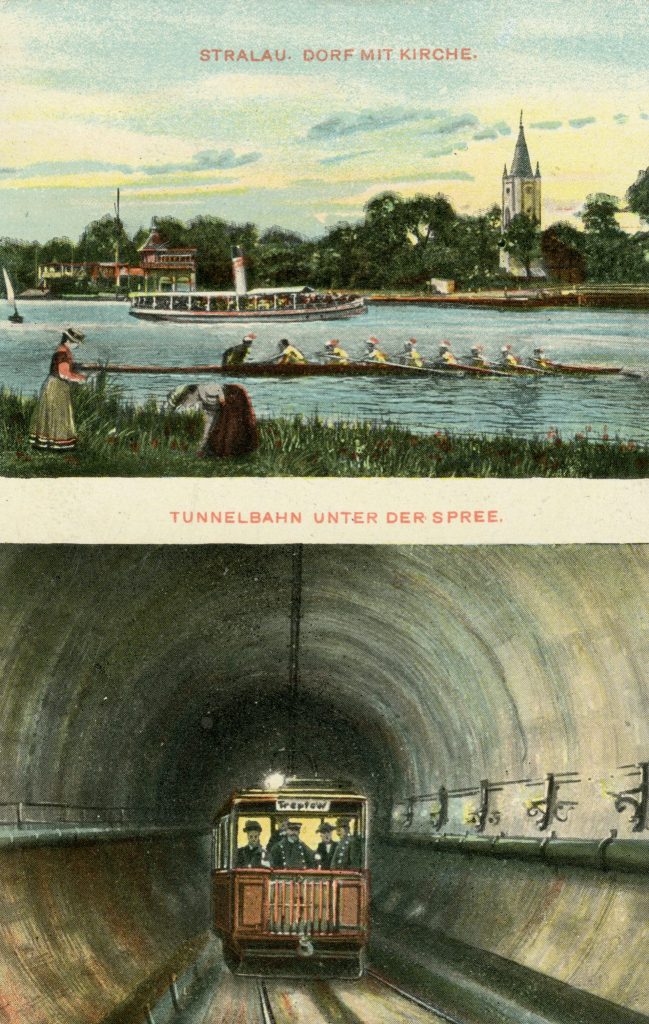
Postcard 1920
Archive of the FHXB Museum, postcard collection
-
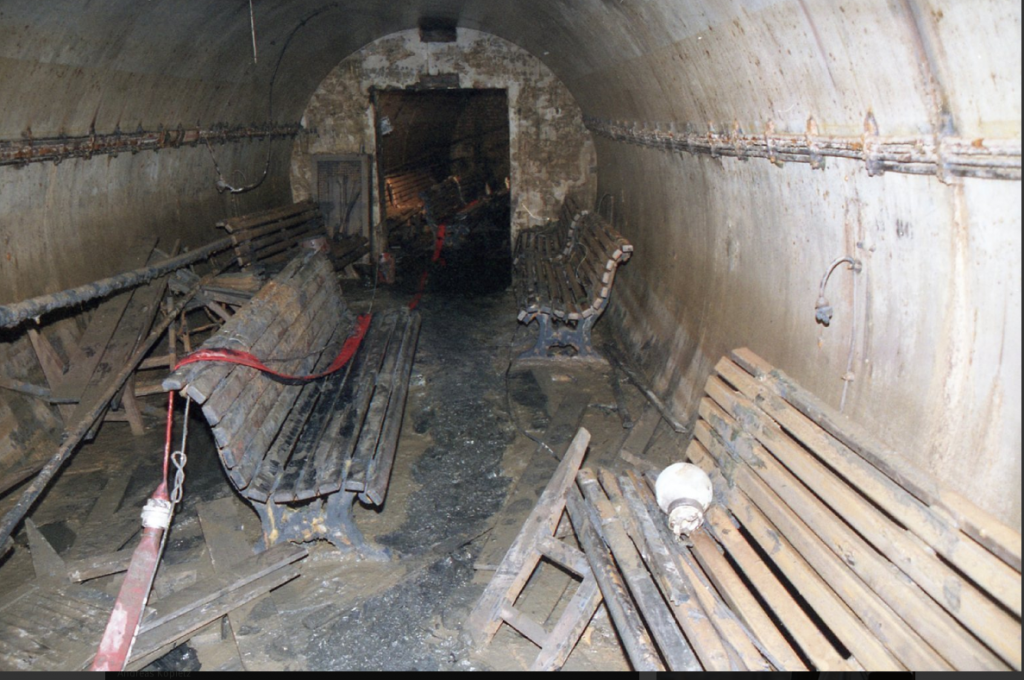
Air-raid shelter from the Second World War after flood water had been removed, 1996
Photo credit: Andreas Kopietz
-
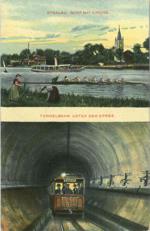
Tunnelsbahn-FHXB-Museum
Postkarte Tunnelbahn Stralau-Treptow
-
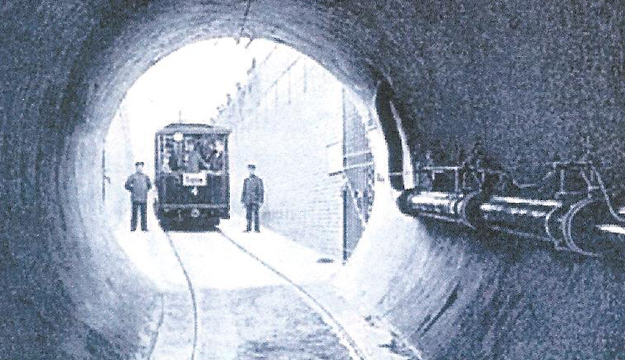
Passing on the baton at the end of the tunnel, postcard
Treptow-Köpenick Museums
-
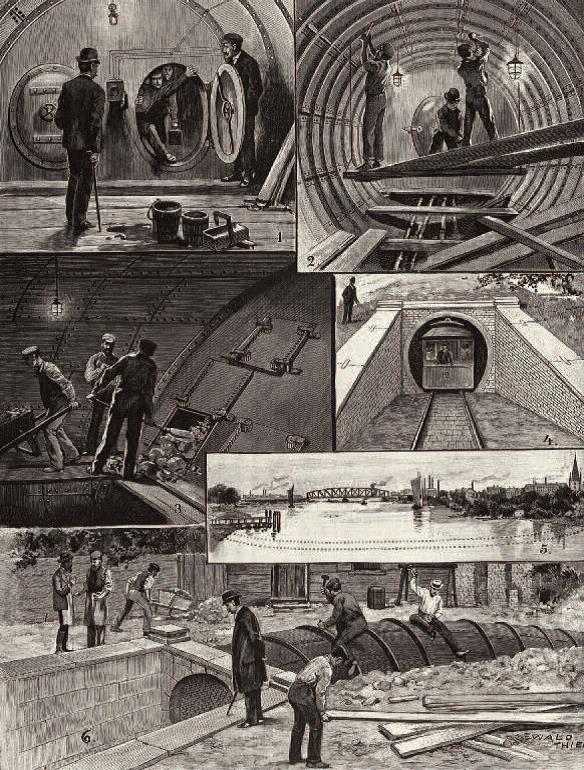
Constructing the Spree tunnel
From Das Buch für Alle, 1899, issue 17 Collection of Axel Mauruszat